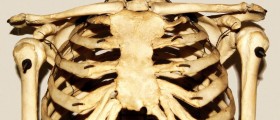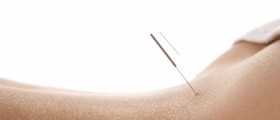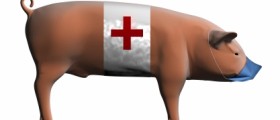A lot of people do not know that sternum is actually a breastbone. It is a long and flat bone located in the chest. Breastbone is made up of three main bone segments which are known as manubrium, which is the upper portion and triangular in shape, corpus, which is the body, and the xiphoid process, which is the tail. A person who experiences lower breastbone pain experiences it due to the pain that the lower part or the xiphoid process that exhibits it.
Pain in this particular region can be caused by some complications in the heart, gallbladder or bone. People who suffer from pain in this region know that it is quite annoying and discomforting. Certain simple tasks like lifting some objects or bending are restricted because of the pain in the lower breastbone. In some cases the pain is concentrated in one location but in other cases it can spread across the rest of the sternum.
Causes of Pain Under Lower Sternum
There is no one cause of sternum pain and there are lots of different factors that contribute to the pain. Most common and obvious signs and symptoms are pain, discomfort and a certain feeling of tenderness in that particular region. Apart from these, a person may also experience an unpleasant sensation in the upper abdominal area. There are several causes that occur in most cases of pain under lower sternum cases.
- It has been suggested that causes of musculoskeletal chest wall pain (MCWP) can be grouped into three categories and individual conditions can be broadly considered as more and less common conditions: (1) conditions causing isolated musculoskeletal pain; (2) rheumatic diseases; (3) systemic non-rheumatological conditions.
- In one general practice sample, costochondritis, also known as costosternal syndrome and anterior chest wall syndrome, was the most common specific cause of anterior musculoskeletal chest pain, with a prevalence of 13%. Patients with costochondritis typically present with multiple areas of tenderness without swelling over the costochondral or costosternal junctions, palpation of which reproduces their pain. Most commonly, the cause is unknown. It differs from the rarer Tietze’s disease, which typically involves only one area with associated painful, localised swelling.
- Lower rib pain syndrome (also termed painful rib syndrome, rib-tip syndrome, slipping rib, twelfth rib and clicking rib) typically presents with lower chest or upper abdominal pain. There is a tender spot on the costal margin and pressing on this reproduces the pain. The cause is unknown, but it has been suggested that inadequacy or rupture of the interchondral fibrous attachments of the anterior ribs can allow subluxation of the costal cartilage tips, impinging on the intercostal nerves.
- The evidence base for interventions specifically targeting MCWP is very limited. A recent systematic review of interventions for non-cardiac chest pain identified only two randomised controlled trials (RCTs) addressing musculoskeletal causes. In an RCT in 114 female patients with pain in the thoracic area, facet-traction manipulation of the thoracic spine by an experienced physiotherapist was only modestly superior to placebo treatment with sham interference-electrotherapy for short-term (4 week) pain reduction (decreases of 3.2, compared with 2.3 units on a 10-point visual analogue pain scale). In the same study, acupuncture was not effective.
- A second trial assessed chiropractic treatment for acute musculoskeletal chest pain. This trial compared 4 weeks of chiropractic treatment, including spinal manipulation, with self-management advice including home exercises. Importantly, there was a high risk of bias in this study because the patients, who were not blinded, self-reported pain outcomes. Thus, the results should be interpreted cautiously. At best, there was only a minimal short-term benefit from chiropractic treatment.
- Reproducing the patient’s pain by palpation or by movement is a key diagnostic feature for isolated musculoskeletal chest pain.
- Investigations may be needed if rheumatic or other systemic diseases are suspected.
Indigestion or heartburn can cause pain in this region and it occurs in a lot of cases. In some cases, the pain is caused by gastroesophageal reflux disease or GERD. Esophagitis is also known to cause pain in this area. This particular pain occurs when there is an inflammation or irritation in the inner lining of the esophagus. If a person has strained a pectoral muscle, he or she will most likely experience breastbone pain.
There are various ways a person can strain his or her muscle. Deep breathing and heavy exercises are only some of the causes. A person may also experience pain because of breastbone fracture. However, these situations are really rare. The pain in the breastbone may be a sign of some respiratory disorder like asthma, bronchitis or tracheitis for instance.
Treating Lower Sternum Pain
Before starting the treatment, it is essential that the real cause is discovered and a proper diagnose is made. In cases of muscle strain, people should apply hot or cold compresses. Antibiotics are used when a person is suffering from an infection or a respiratory disorder.
- www.nhs.uk/conditions/costochondritis/
- medlineplus.gov/ency/article/000159.htm
- Photo courtesy of Nino Liverani via Unsplash: unsplash.com/photos/CKxD_Qh6ULY

















Your thoughts on this
Loading...